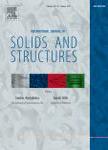版权所有:内蒙古大学图书馆 技术提供:维普资讯• 智图
内蒙古自治区呼和浩特市赛罕区大学西街235号 邮编: 010021

作者机构:Zhejiang Univ Coll Civil Engn & Architecture 866 Yuhangtang Rd Hangzhou 310058 Zhejiang Peoples R China Swiss Fed Inst Technol EPFL Appl Comp & Mech Lab IMAC Sch Architecture Civil & Environm Engn ENAC CH-1015 Lausanne Switzerland
出 版 物:《INTERNATIONAL JOURNAL OF SOLIDS AND STRUCTURES》 (国际固体与结构杂志)
年 卷 期:2020年第202卷
页 面:278-298页
核心收录:
学科分类:08[工学] 0801[工学-力学(可授工学、理学学位)] 080102[工学-固体力学]
基 金:National Key Research and Development Program of China [2017YFC0806100] Natural Science Foundation of Zhejiang Province [LR17E080001] National Natural Science Foundation of China EPFL Applied Computing and Mechanics Laboratory (IMAC)
主 题:Topology design Topology optimization General tensegrity Rigid body Mixed-integer linear programming
摘 要:This study presents a general approach to the topology design of tensegrities with rigid bodies. To the best of the authors knowledge, all existing topology design methods of tensegrities focus on tensegrities that only consist of members carrying axial forces, which are referred to herein as classic tensegrities. However, another category of tensegrities, referred to as general tensegrities, contains rigid bodies aside from axially loaded members. The equilibrium and stability conditions of general tensegrities are different from those of classic tensegrities because of the existence of rigid bodies, which makes the existing topology design methods invalid for general tensegrities. In this study, the equilibrium and stability conditions of general tensegrities are first derived. A topology design approach for general tensegrities is then proposed based on a mixed-integer linear programming optimization scheme. The topology (i.e., member connectivities) is treated as a binary variable, and the member forces are treated as continuous variables. Three essential attributes, namely self-equilibrium, unilateral member force, and class-k condition, of a general tensegrity, as well as some other practical requirements, are formulated as constraints. Different objective functions are employed to design different general tensegrities. Some well-known general tensegrities are reproduced, and various numerical examples are presented to verify the effectiveness and versatility of the proposed approach. The proposed topology design method is verified to be a truly general approach for the topology design of tensegrities with or without rigid bodies. (C) 2020 Elsevier Ltd. All rights reserved.